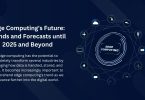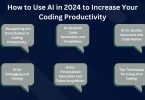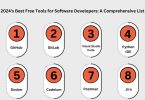Machine Learning
Machine learning is a part of a broader subfield in AI referred to as artificial intelligence (AI), wherein the algorithms are provided with datasets to train themselves and build their self-learning models. It can then make predictions and categorize information on their own without human involvement.
This technology covers a wide area of industrial application, e.g. in digital marketing, stock market prediction and translation.
Machine Learning (ML) vs. Artificial Intelligence (AI)
“Machine learning” and “artificial intelligence” might appear as two synonyms, but they represent different meanings.
AI as a whole covers a wide range of activities aimed at creating intelligent machines that can perform cognitive tasks similar to humans, while ML uses algorithms and datasets to do this.
Examples and Uses
Machine learning permeates daily life through a myriad of applications, including the following:
Recommendation Engines: Websites, like Amazon, Spotify and Netflix, do their best to recommend products, music, or TV shows by using recommendation engines that analyze users’ interests and previous behavior.
Speech Recognition Software: Transcribing voice recordings into text format is possible with speech-to-text applications; and this way communication and accessibility are improved.
Fraud Detection Services: Banks take advantage of machine learning algorithms that are capable of spotting unusual transactions and pinpointing potential fraud.
Autonomous Vehicles: The auto-pilot feature is powered by AI employed for advanced driver assistance like blind-spot detection and automatic braking, therefore, improving vehicle safety.
Real-Life Machine Learning Uses & Applications
Machine Learning is used in a wide range of applications, and these are the cases that show its use in the real-world.
The examples we are witnessing of such machine learning confirm that intelligence controlled by a machine is a part of our daily schedules.
Recommendation Systems
Machine learning-based recommendation engines which are employed by the e-commerce websites are those that collect information about user activity to make sure to distinguish trends that have been found in browsing history, past purchases and shopping cart activity. Just like Spotify and Netflix who use the same type of algorithms to recommend music or movies respectively, depending on each user’s taste.
Social Media Connections
LinkedIn and Facebook are among the platforms that use algorithms to recommend people to connect to other users based on their previous activities such as interactive posts, comments, likes and existing networks.
Image Recognition
Automated recognition of the objects or individuals in images is established thanks to pixel intensity analysis performed by the machine learning programs. Face recognition, used for login systems and the police in order to identify offenders from databases is one of the most important developments of biometrics in recent times.
Natural Language Processing (NLP)
NLP tools take the speech signal and convert it into text enabling the physician to extract medical terminology and provide patients reminders.
Virtual Personal Assistants
These devices like Amazon’s Alexa and Apple’s Siri use speech recognition and machine learning to comprehend and satisfy user commands, for instance, they give out weather updates and other data.
Stock Market Predictions
Machines learn patterns in data and create rules of behavior to forecast stock markets by mirroring how the markets performed in the past. This helps the analysts to make good decisions based on future expectations.
Credit Card Fraud Detection
Predictive analytics and machine learning algorithms utilize transaction variables to identify fraudulent activities which in turn gives an alert to the bank for security measures.
Traffic Predictions
Apps like Google Maps utilize machine-learning models to compute the traveling times through analysis of historical traffic, thus they deliver the most suitable route plans which are up-to-date.
Self-Driving Car Technology
Reinforcement learning is the key element that powers the autopilot transportation system where the cars can respond and adapt to different scenarios using real-time data about the surroundings.
Final Thinking
The science behind machine learning has gone beyond literature and is a physical force that can be seen in our daily lives. From the way product recommendation engines recommend certain items for one’s shopping to the way credit card fraud is combated, machine learning is just quietly doing its job. This article has not just excited the surface of ML abilities. It is expected that algorithms will become more and more sophisticated and data collection will increase, consequently, there will emerge more surprising applications. It is now happening to become a time when machine learning is gaining traction, whether you are a developer, researcher or just a curious observer. Through the persistence of research and innovation, machine learning may turn out to be a key that unlocks the renovated, more effective and interconnected future.








